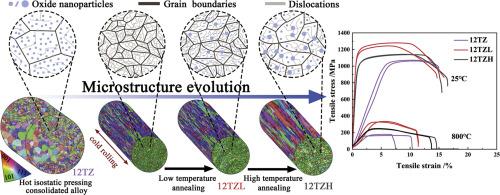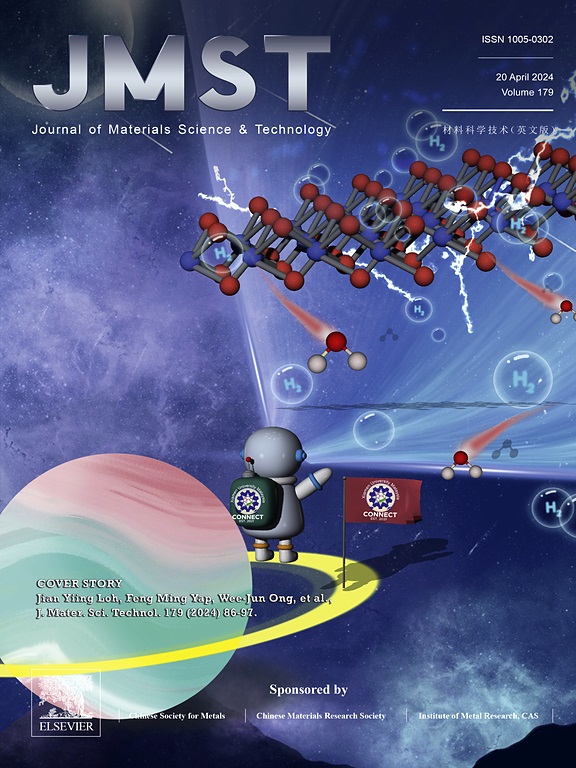Evolution of oxide nanoparticles during thermomechanical processing and its influence on mechanical properties of a 12Cr ODS alloy
IF 11.2
1区 材料科学
Q1 MATERIALS SCIENCE, MULTIDISCIPLINARY
引用次数: 0
Abstract
A Fe-12Cr-2W-0.2Zr-0.1Ti-0.35Y2O3 ODS ferritic alloy was prepared by ball milling, hot isostatic pressing (HIP) and thermomechanical processing herein. The evolution of oxide nanoparticles (ONPs) with different intermediate annealing temperatures of thermomechanical processing and its effect on microstructure and mechanical properties of the ODS alloy were investigated. The result shows that the intermediate annealing temperatures played a decisive role in the size, morphology and structure of nanoparticles in the final alloy since this was attributed to the fact that fine particles were dissolved through dislocation shearing during cold deformation and then re-precipitated during subsequent heat treatment. The high intermediate annealing temperature promotes the growth of the near-spherical ONPs, while the ellipsoidal nanoparticles are developed at relatively low temperature. Meanwhile, the structural change of the ONPs was also facilitated by the dissolution-reprecipitation behavior. The predominant Y2(ZryTi1−y)2O7 with cubic pyrochlore phase in as-HIPed alloy can be transformed into Y4Zr3O12 particles with rhombohedral structure during the thermomechanical treatment. However, compared with the change in size of ONPs, the change in morphology and structure of ONPs has no obvious influence on the mechanical strength. Different intermediate annealing temperatures play a different role in the coarsening of ONPs during thermomechanical treatment, which makes the alloy annealed at low temperature exhibiting more uniform distribution of ONPs and better mechanical properties.

求助全文
约1分钟内获得全文
求助全文
来源期刊

Journal of Materials Science & Technology
工程技术-材料科学:综合
CiteScore
20.00
自引率
11.00%
发文量
995
审稿时长
13 days
期刊介绍:
Journal of Materials Science & Technology strives to promote global collaboration in the field of materials science and technology. It primarily publishes original research papers, invited review articles, letters, research notes, and summaries of scientific achievements. The journal covers a wide range of materials science and technology topics, including metallic materials, inorganic nonmetallic materials, and composite materials.
 求助内容:
求助内容: 应助结果提醒方式:
应助结果提醒方式:


